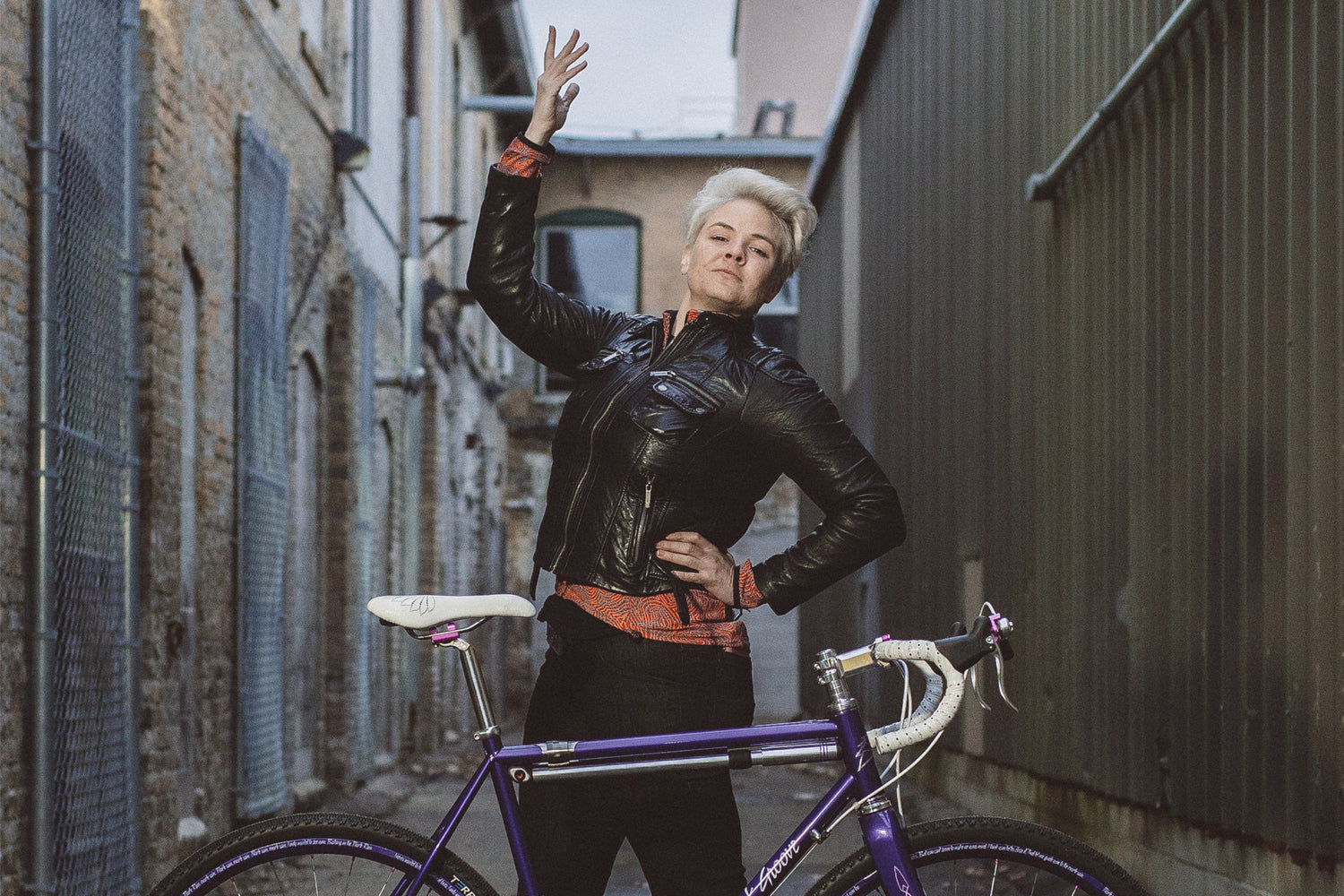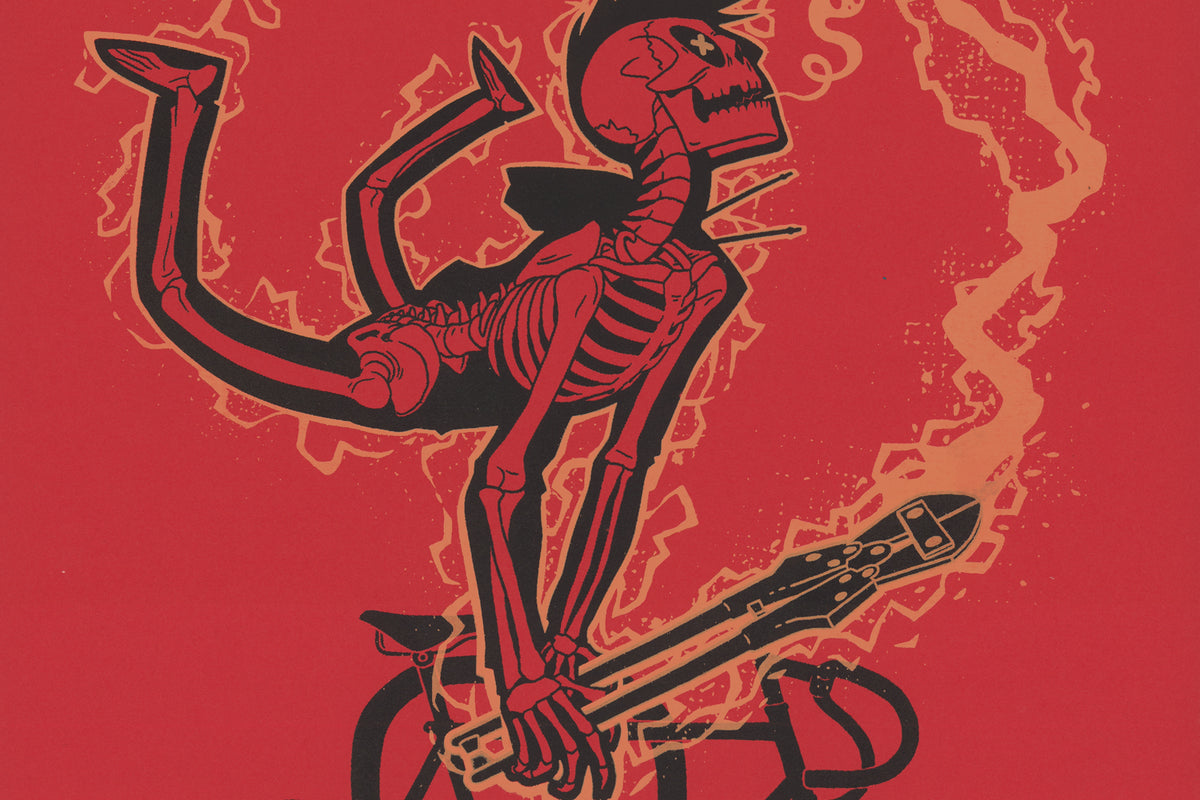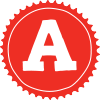
Geniuses In The Details
The Twin Cites has long been known as a place where a lot of people ride bicycles: For all kinds of reasons, in all kinds of weather, on all kinds bikes. What’s not as widely recognized, however, is that the Minneapolis – St. Paul area is also home to a thriving and incredibly creative community of custom frame builders. Letting the world in on this best-kept secret is the whole point of MinneCycle, a.k.a. Minnesota’s Premier Handmade Bicycle Show.
Heading into its fifth year, MinneCycle is getting a boost from a familiar name in the bike industry: Anna Schwinn, a writer, product designer, and all-around champion of all things bicycle. As someone who literally grew up in the bike business and worked as Lead Engineer for All-City Cycles, Civia Cycles, Foundry Cycles, and Whisky Parts Co., she also knows a few things about what it takes to build a world-class bicycle.
Anna was kind enough to take a few minutes away from the hectic preparations for Saturday’s show to talk with us about custom bikes, creativity, and what makes a great bicycle.
ARTCRANK: What inspired you to take on MinneCycle this year?
Anna Schwinn: When it comes to custom bikes, we really have a star-studded crew here in Minnesota. As a native Midwesterner and as a cyclist, I couldn't be more proud of it. I want to celebrate it and I want everyone to know about what these craftspeople are building.
All of these bikes run much deeper than what you see on the pretty, polished surface. Each builder has a style and a method that they’ve refined and perfected over decades. When people go to the show, they’ll get a chance to see this for themselves, but I also want to build out an online experience that helps tell the same story.

Creativity seems to be statistically overrepresented in the Twin Cities across the board, and bike building is no exception. Do you think there’s something about this area that attracts or encourages people who like to make stuff?
There are a lot of aspects to the cities in terms of infrastructure that make it attractive to creative people. For one, it is relatively inexpensive to live here, unlike several other progressive cities I can think of. You don’t need a car. Beyond that, our government invests a lot in art as well as public spaces and infrastructure. We’re fortunate to be surrounded by lakes and parks, so you’re never that far away from public space or a dip in the summer. Plus, though our winters are pretty brutal, it does give you an excuse to go hide away in your workshop and get things done for four months out of the year. I joke about moving a lot, but it’s really hard to beat the Twin Cities when you get down to it.
As far as why we have such an exceptional group of bicycle framebuilders, I think it goes a little beyond that. The upper Midwest is pretty isolated from the rest of the domestic framebuilding community. See, there are massive communities of framebuilders with strong apprentice lineages and communities on the coasts, in Colorado. The North American Handmade Bike Show typically travels to — or close to — those locations, so the world is regularly exposed to those builders and their styles. The upper Midwest is relatively isolated from all of that, which is why I think it makes a lot of sense that we have so much unique work coming out of this region.
You’ve designed bikes and components for some of the bigger brands in cycling. Can you share a little bit about the creative process of taking a bicycle from idea to execution?
Bicycles are deceptively complicated machines when you really get into all the details, and it can take years for a production bicycle from concept to final product. Even small details can be highly involved, like dropouts or cable routing: If you want some insight into it, I’ve written extensively about the process of designing certain specific frame parts when I was with All-City Cycles. I would suggest looking at the four part series I wrote on the design and development of the single speed disc dropout I did for that brand.
Generally, though, any effective component to a production bicycle should be something that is a pleasure to work with, from installation to actuation. If you're doing your job extremely well, you carry that philosophy throughout an entire product’s experience.
Production bikes, which are what I’ve worked on primarily, are challenging because you have to consider such a broad base of people interacting with the bicycle, from the people fabricating the product to the mechanics assembling and maintaining it, to the many different rider fit and user needs — not to mention the many ways any type of bicycle or component can be ridden. In some ways it’s very personal to try to get into each of these user’s heads and anticipate their needs. In other ways, it is impersonal: You’re designing for a mob rather than an individual, and make a lot of compromises in the process.
I think all of this is why I’m such a fan of custom bicycles. They aren’t designed to serve the needs of hundreds or thousands of riders pretty well. Instead, they are designed to serve the unique needs of a single rider extremely well. They don’t have to compromise on tubing selection, frame details, fit, styling, et cetera, in order to appease or appeal to a whole group of consumers.
You’ve been sharing some amazing bikes from the show on social media. Tell me about the ones that have really stood out to you.
I was pretty blown away by these local builders when I came to the show last year. I’d spent the previous year going deep in understanding and covering custom builders and their processes. And then I came back home, went to a show of builders who had basically been in my backyard the whole, and was stunned by what I saw. They were all pretty exceptional, but if I had to pick my favorites…
Chris Kvale is a self-taught framebuilder who has been building for nearly four decades. He builds a stunning classically styled, steel-lugged frameset, with ultra thinned lugs and finish. He also nickel-plates his own dropouts and paints and finishes his own framesets, owning every part of the process.
I was very excited by everything he brought last year, but the bike that really stuck out for me was a purple track bike with yellow detailing. The bottom bracket cluster alone had so much going on. Aside from the thinned interfaces of the bottom bracket shell, Kvale also bored out the chain stay interfaces so he could use a larger diameter, stiffer, round stays. The shell appears to have manually machined and painted pockets on the bottom side, which I love. I really love detailing that you have to go searching for, that you can’t see immediately.
It’s a personal bike of his, which you can tell by the images — he left his seat bag and personal pump on the bike. Chris likes riding track bikes on the road, hence the front brake. I don’t get jealous of other people’s bikes often, but that bike really struck me in a deep, visceral way. The whole bike is a collection of gorgeous details, each executed in an outstanding way.
The other bike I would call out as being impressive to me was the green Clockwork gravel bike. Joel Greenblatt loads a lot of really neat technical details into his frame. On this one, he has these lovely gear-motif bilaminate details emanating from the headtube on the top and downtube, as well as at the top tube and seat cluster. These features, in addition to pulling his clockwork branding into the frame, also have the benefit of providing stress relief at these joints, a nice functional feature. The bilaminate sleeves are fillet brazed into their joints- something else Joel does really well.

There are also several features on the frame that help to mitigate paint wear. At both the seat clamp and front derailleur clamp, there are stainless raised surfaces to serve as interfaces for these clamps so they don’t touch or rough up paint. One of the most popular images on the MinneCycle Instagram account right now is a shot of the fork crown, which has a cable stop built into it for the brakes. I could go on and on about it…it’s thought out well, designed to wear well for the owner, and executed incredibly well.
Obviously, we have to talk about the Prince bike that Erik at Peacock Groove built for you. Tell us the story behind that one.
I had been a Peacock Groove superfan for years. When I moved to Minneapolis, I became friends with Erik, and after a few years, I had honestly separated Erik-my-friend from Erik-the-bike-builder whose work I had admired and loved. We were sitting around his shop one night, probably having bourbon, and I was lamenting that I needed a new cross/gravel/all-around bike.
Erik looked at me, kind of puzzled, and said “You know I’m a bike builder, right?” And my head kind of exploded. I could have a Peacock Groove…how freaking cool would that be? So we picked a Prince theme, as we are both pretty big fans and Prince really embodied the best qualities you can have as an artist. I gave him the specs for what I wanted, how I wanted it to work. The bike got into the queue. Erik builds all of his bikes by hand, so each one can take awhile.

Just a couple months later, Prince died. Minneapolis was devastated. Erik and I basically decided to knuckle down and take it to the next level as a tribute bike. He built an absolutely stunning frame for me and hand polished or modified all of the components. I was contacted by a few people who knew Erik was doing the project and wanted to contribute through creating their own custom components. PAUL Components did a set of custom polished Klamper brakes, as well as a matching stem and seatpost. The stem actually has a pick Prince played with machined into it, contributed by my friend Mark Rahn. The saddle and tape are Leh leather. Erik had the HED rims painted to match the frame with all of the lyrics to Purple Rain.
I’m completely in love with it. It has all of my favorite components. And yes, I’ve ridden the crap out of it. I’ve gotten it extremely muddy. The paint is chipping in some areas. But it’s still the most beautiful bike in the world to me.
So you’re talking to someone at a party, and they’re in the market for a new bike. What’s your elevator pitch for getting a custom bike?
I don’t think I’d ever tell anyone to get a custom bike as their first bike. There is a lot to appreciate and enjoy about production bikes, but I encourage people to dip their toes into customization however they can. Maybe it’s new tires or saddle or bar tape. Maybe it’s a special drivetrain. Try out a custom paint job- even if that’s just you pulling your bike apart and hitting it with a rattle can and some masking tape. Have someone professionally fit you to your bike. Meditate on how your bike could be better or more enjoyable for or special to you. The more you invest in your bike in terms of self-education or as a way of self expression, the more you’ll be excited about it and about riding it and the more excited you’ll be about bicycles in general. I think that’s what’s most important.
That all said, when you’ve played with everything that can go on a frame, eventually you kind of hit a wall because the frame is a wall in its own way. At this point, you are in a fabulous position to appreciate and enjoy a custom frame or frameset. When you can have a frame completely tailored around your fit, body type, how you’re going to use the bike, and as a vehicle for personal expression, it’s a whole other level of experience. And I think that’s very exciting.
For more information, see the MinneCycle Instagram account.
Photos of Anna Schwinn's Peacock Groove bike by Zane Spang. All other photos by Anna Schwinn.
Also in News

Every Ride Has An End

And now for something completely different.
We’ve made changes to the way we operate to accommodate the series of new realities we’ve found ourselves in since March. We’ve also had a chance to bear down and focus on some ideas that we’ve had in the works for a long time and just hadn’t had the time to pull off. Our new site is one of them.


Charles Youel
Author